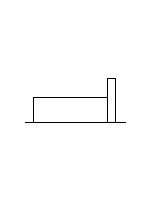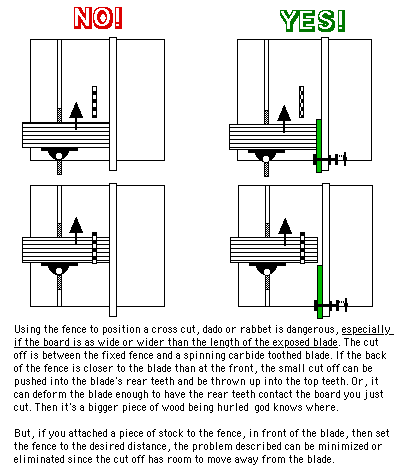Type of Cut
Ripping
....As noted earlier, ripping against the fence presents opportunities for a kickback. A fence leaning into the blade or a blade leaning towards the fence can force the back of the cut board into the rear teeth. A fence that isn't parallel to the blade from front to back can result in the same problem. The result can be the classic "spear chuckin'" kickback.
Cross Cutting
....Cross cutting, using the fence to postion the board and the miter gauge to hold it as it is fed to the blade, presents an opportunity for a "flippin' and flyin" kickback. If the cut off gets trapped between the spinning blade and the fence it can make contact with the teeth at the back of the blade which will lift it and throw it. BUT - worse yet, while doing that, it can also deform the blade into the board being cut. The animation below illustrates what can happen if that occurs. The "flippin' and flyin'" kickback is a scary one because the flying stock is on the left side of the blade - "the safe side" when ripping.

To minimize the likely hood of the "flippin' and flyin'" kickback look at the two diagrams below the animation and read the text. If you take the pecaution shown in the second diagram you will significiantly decrease having the "flippin'and flyin'" kickback happen to you. Worst case, it'll be the small cut off that goes flying and not the rest of the board.
